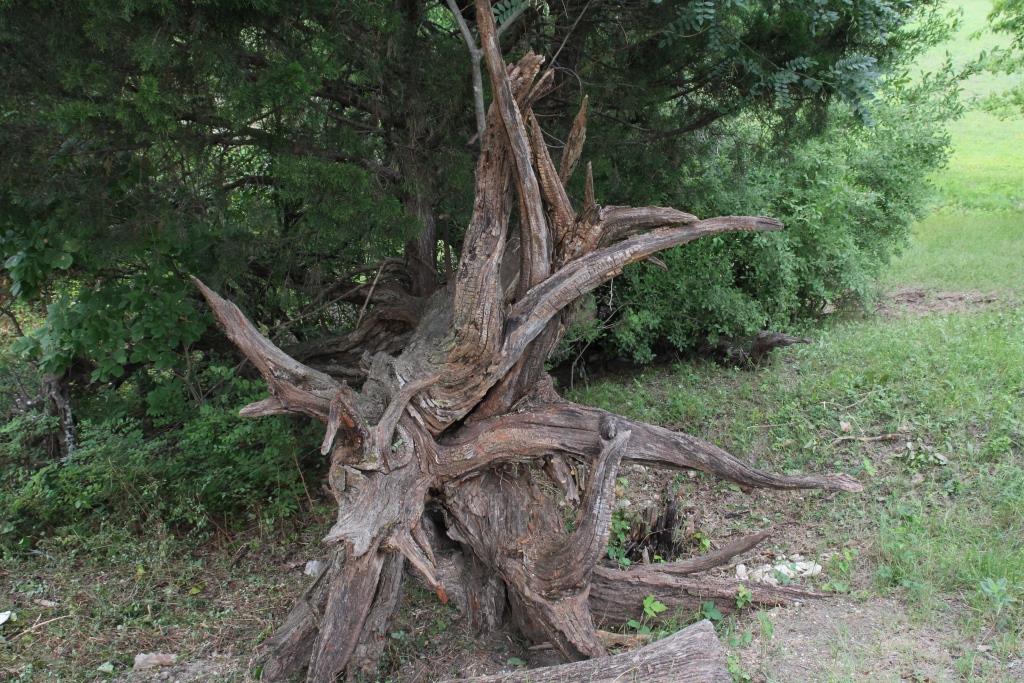When I was a kid, I lived in a place without Chiggers, Fire Ants and scorpions, where moss grew freely and it was possible to walk barefoot and lie down on a bed of moss or between rows of corn to gaze at the sky. My friends and I, on long summer days when we had tired of the running/chasing games at hand, would flop down and lie on our backs to watch the clouds float by and indulge in some cloud gazing. One would call out “I see an elephant.” Another would chime in, “There’s a dragon over there.” We saw clowns, rabbits, alligators, old men, sailing ships, ice cream sundaes and more passing over our neighborhood and our little patch of moss. I have no memory of ever being bored as a child.
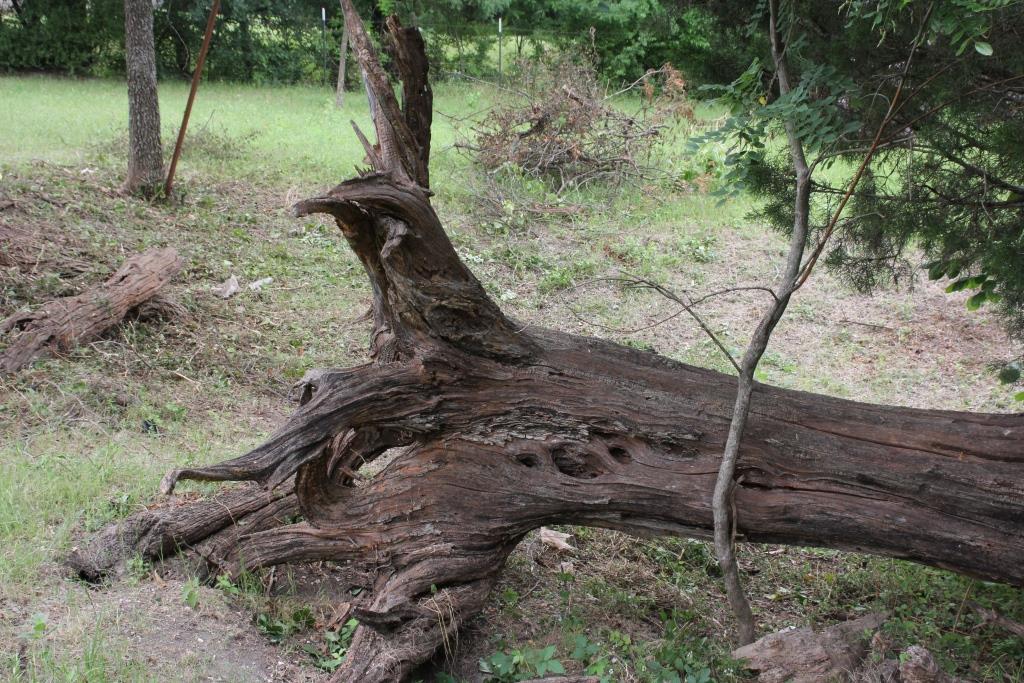
These days, I live in a place where I would not dream of lying on the ground. I know too well that Red Imported Fire Ants would find me in minutes, maybe seconds. With their devious attack strategy—waiting until many have snuck aboard before giving a chemical signal to all bite and sting at once– I would rise covered in painful bites. Definitely takes the serenity out of cloud gazing. If the ants didn’t find me, there would still be Posion Ivy, Spiders, Noseburn (the worst!), and Grass Burs to contend with, and a coating of annoying Torilis arvensis seeds stuck to everything. Ever since the day I stopped for a while to photograph flowers and came back to find a scorpion in the open camera bag I had left on the ground, I’ve been cautious about contact with the Texas soil.
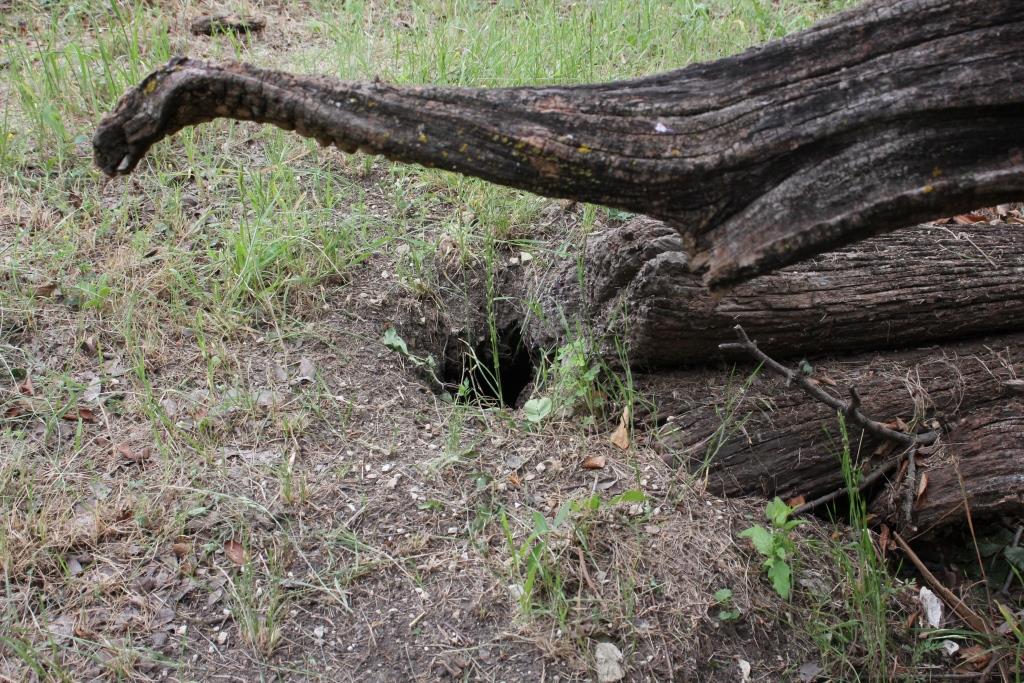
Luckily, in Texas, there is a handy substitute for cloud gazing that doesn’t involve getting a stiff neck from standing and looking up. The harsh weather conditions here lead to slow growing twisted and gnarled trees. The fantastic shapes they make are almost as varied as the shapes of clouds, and I find myself “wood gazing” instead. Our farm neighbors almost certainly think I’m insane already, and if they caught sight of me standing still gazing at a dead tree, their suspicions would only be confirmed in their minds. Maybe it looks a little less weird when the camera is out, than it does when I’m merely standing and smiling.
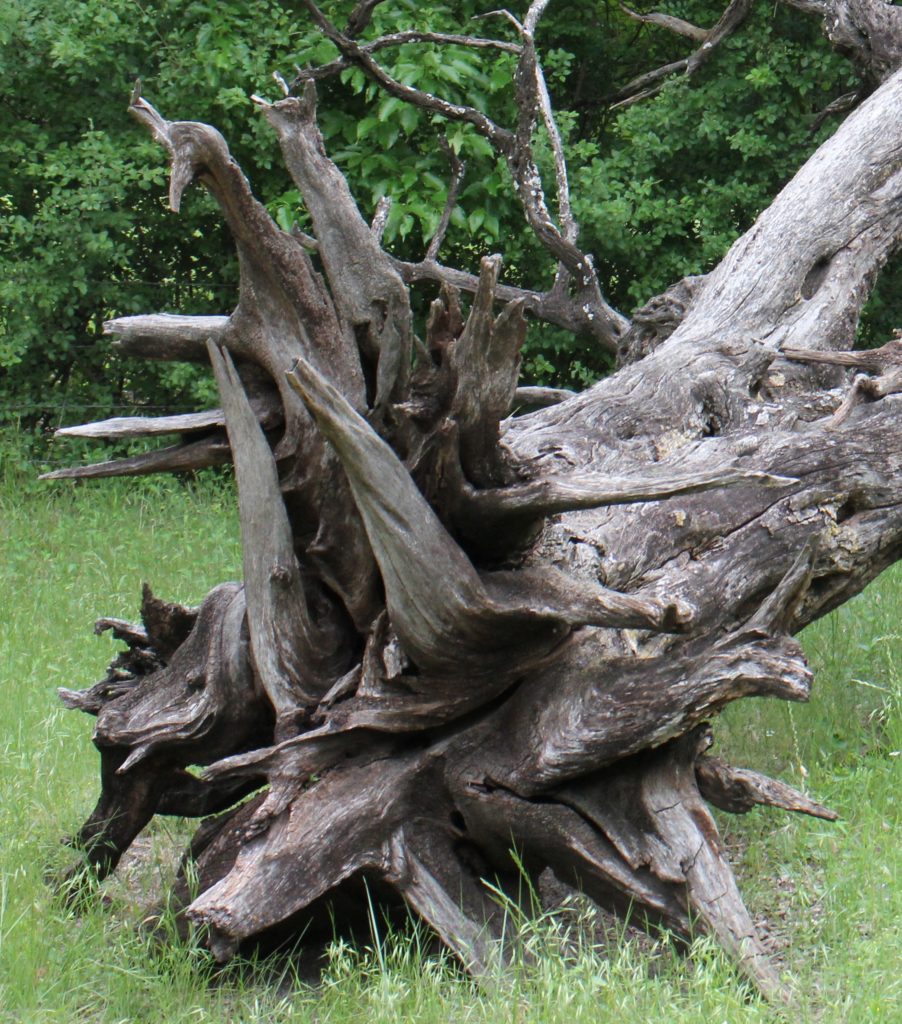
Post Oaks and Bur Oaks make great trees (alive or dead) for gazing, and there are plenty of those at the farm with a legion of dragons, gargoyles, birds, war horses, cats, penguins, bears, dolphins, giraffes, peacocks, bison, old crones and more weathered into the surface of their trunks and limbs. This week, I was lucky enough to come across two downed Osage Orange (Maclura pomifera) trees, and I do believe they take the prize for gnarly interest. There were some big branches so strangely gnarled that I couldn’t conceive of a process that could have made them that way.
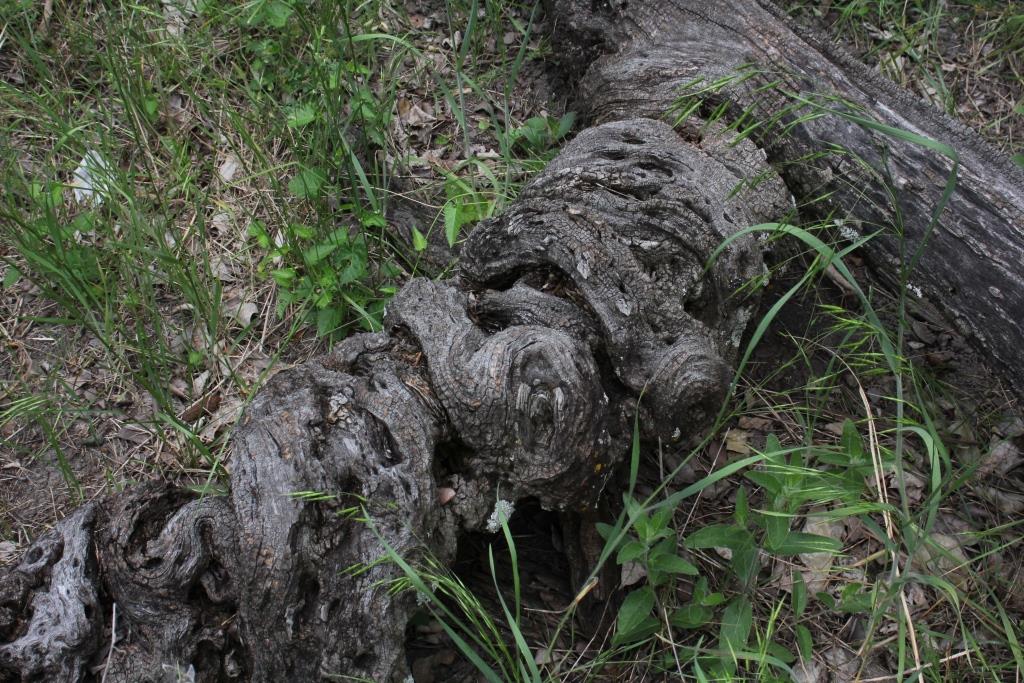
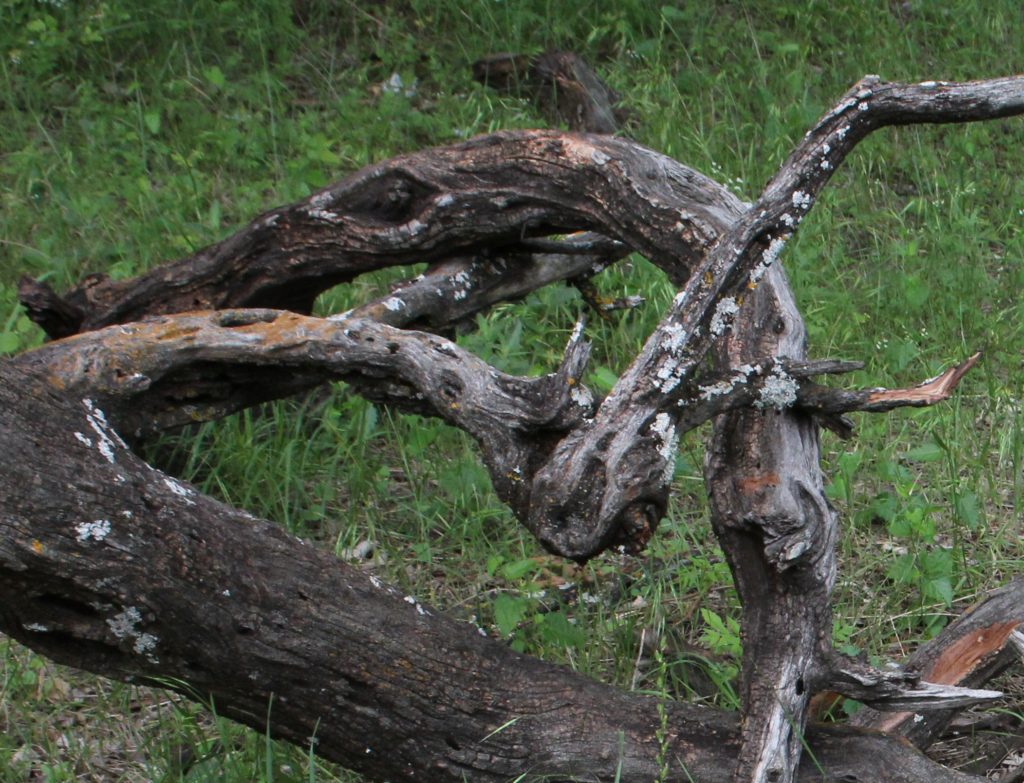
I spent much longer than I meant to, just standing and gazing at the patterns, letting my mind relax and wander and create meaning where there was none.
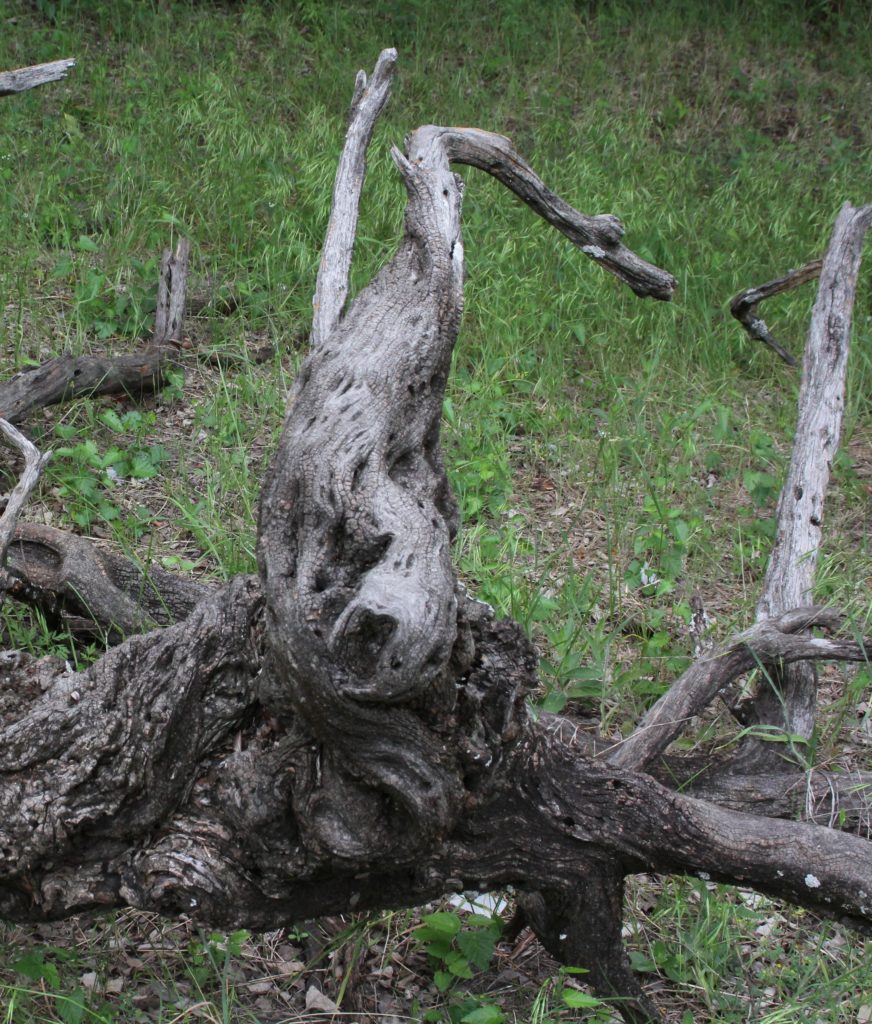
Instead of telling you what I see, I think I’ll just plop down some photos for you to expand and view. Care to join me in a little wood gazing? From the comfort of your home, you’ll probably end up with fewer Chigger bites than I did.




